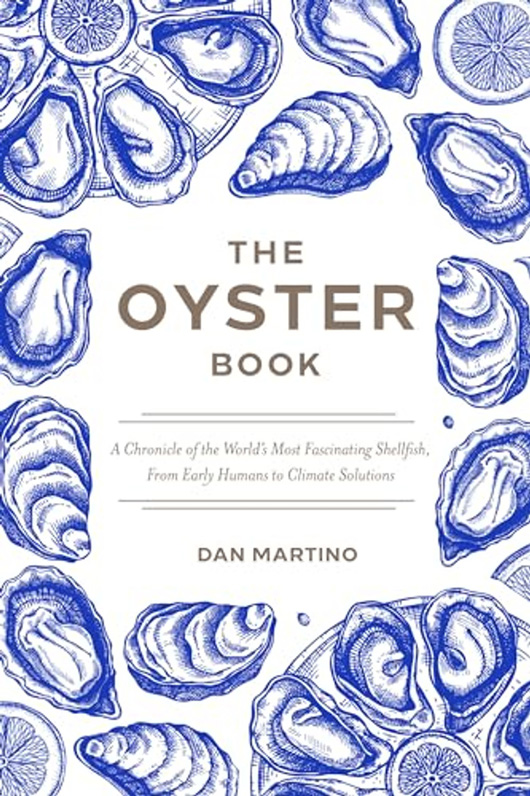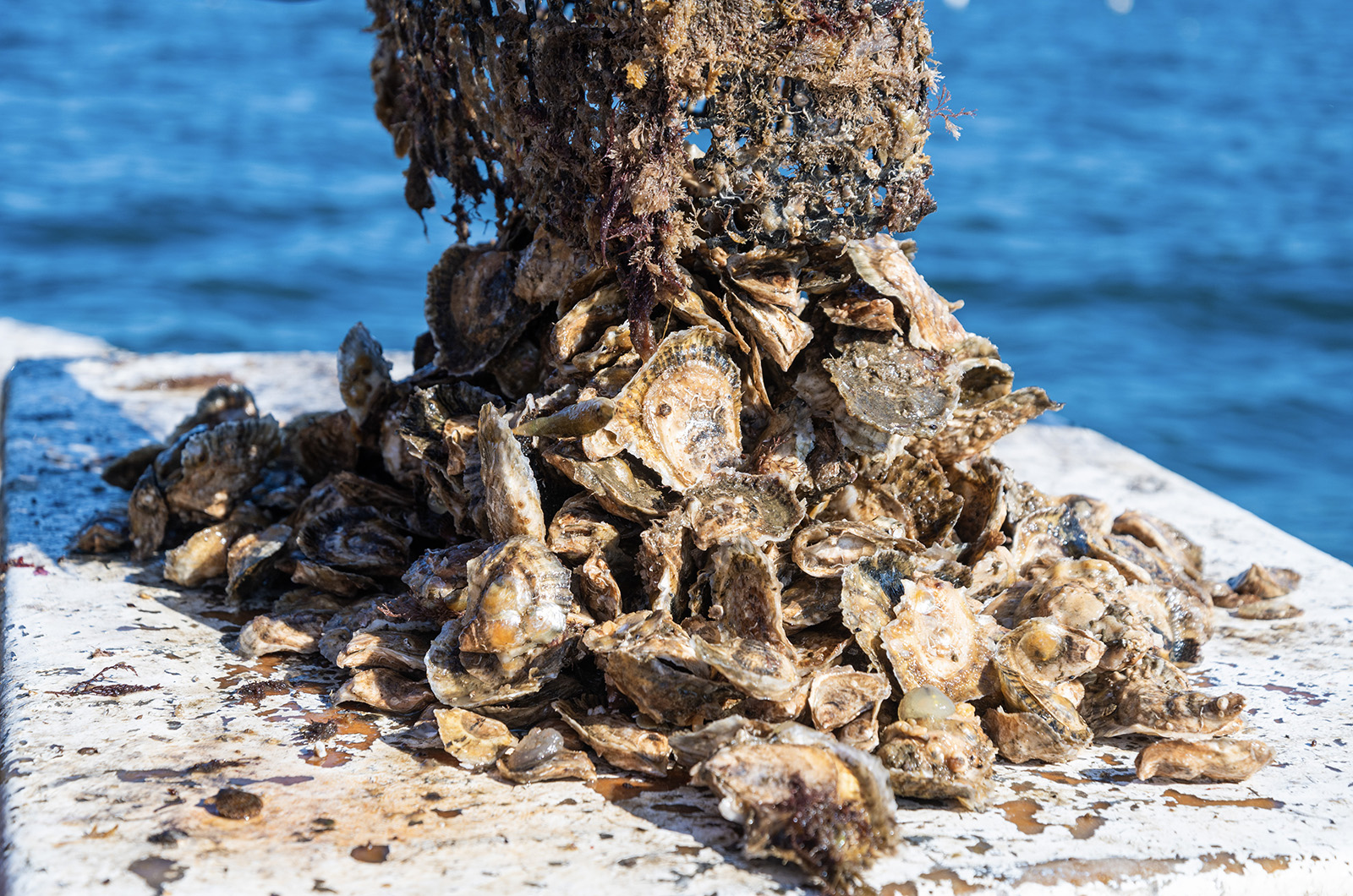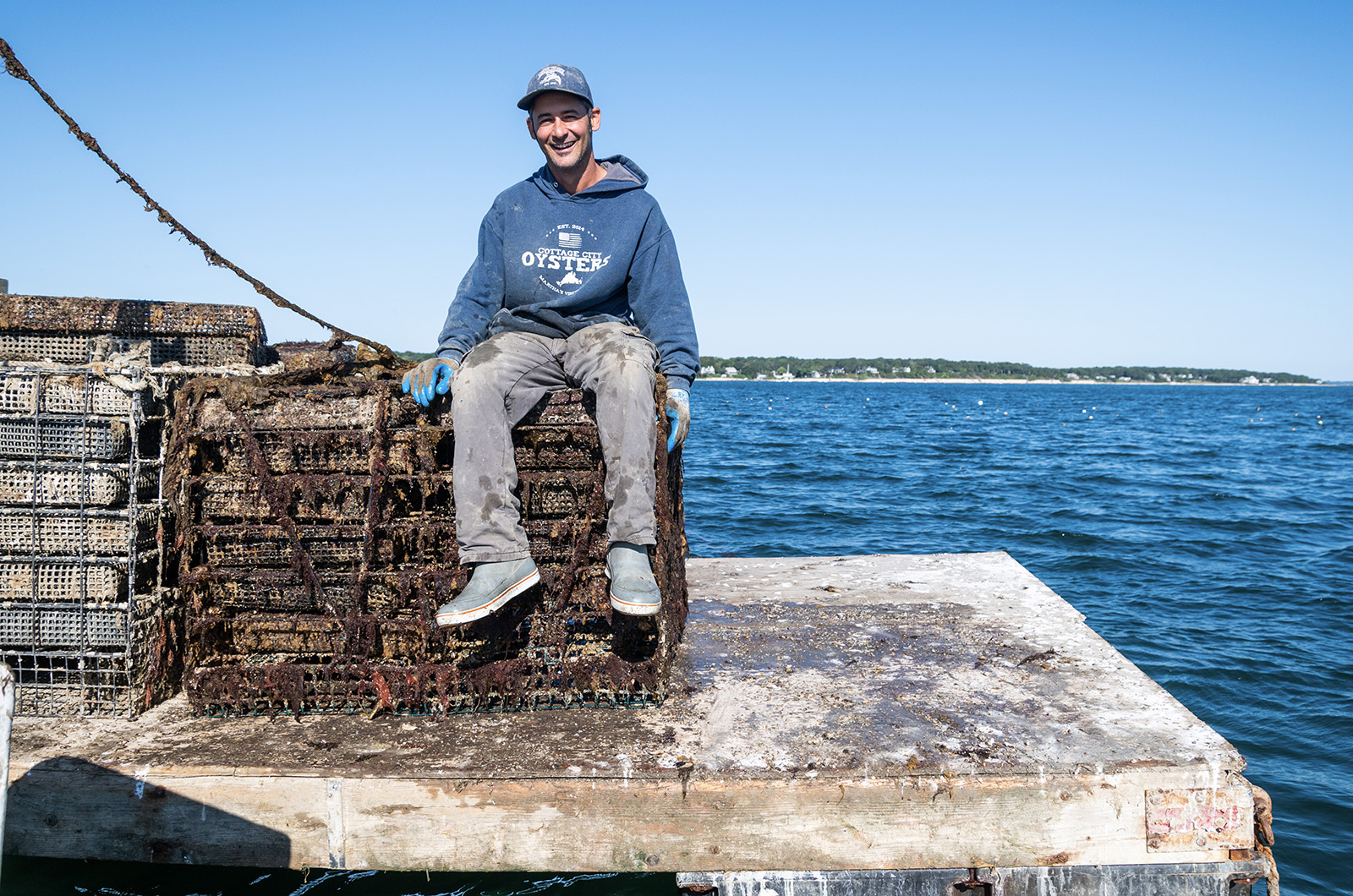After more than a decade of tending oysters and running Cottage City Oysters in Oak Bluffs, Dan Martino is ready to pass his knowledge on to the next crop of farmers.
Mr. Martino has spent the past five years compiling everything he’s learned raising bivalves into The Oyster Book – a 310-page textbook that delves into oyster history, different kinds of oysters and the future of aquaculture.
With the book hitting shelves last week, Mr. Martino hoped that publishing a handbook on the industry would encourage more oyster farms, especially on the Vineyard.
“If the Vineyard wants to maintain its fishing maritime identity, I think [oyster farming] is the solution,” Mr. Martino said. “The Vineyard really is the Napa Valley of oysters.”
During a ride out to his farm off Lagoon Pond, Mr. Martino detailed his circuitous route to oyster farming. Before pulling cages and shucking oysters, he was a filmmaker, working for Plum TV.
When the company went bankrupt in 2013, he worked on freelance projects, one of which was about the Billion Oyster Project in New York. Mr. Martino found the work fascinating and went on to visit Fishers Island Oyster Farm and work at Sweet Neck Oysters in Katama Bay.
The next year, he and his wife Laura Martino took some of their life savings and bought two cages and 10,000 oyster seeds.
With his brother Greg at his side, Mr. Martino and Cottage City Oysters have weathered both literal and figurative storms, and Dan decided it was time to put everything he learned on the printed page.
The Oyster Book covers a large swath of oyster history, from the time humans first started eating the bivalves thousands of years ago through the oyster wars of 1865 and to present day. It discusses oyster farming practices from all over the world and comments on the future of farming with climate change.
Mr. Martino said he wanted to write the book because he could have used a similar one when he was first building his farm. Though oysters have been around since the origins of humanity, there aren’t many books that explain how to grow them, he said.
Creating more competition wasn’t a concern for Mr. Martino, who said the appetite for the briny and sweet delicacies is almost bottomless.
Despite the Vineyard being so close to Boston and New York, there are only 23 oyster farms on the Vineyard. He dreamed of going out of Lagoon Pond and seeing the shore lined with other farmers.
“There are so many mouths that none of us are competing and if we can’t sell oysters on the Vineyard, there’s millions of mouths off Island that will happily eat a Martha’s Vineyard oyster,” he said.
While other books might go into mignonettes and recipes for grilled oysters, The Oyster Book explains farming methods, nursing systems and comments on the future of farming.
Oysters eat phytoplankton and algae, which grow in warm waters, primarily during the summer months. When the water cools and food disappears, the oysters hibernate and stop growing.
Because ocean temperatures are rising due to climate change, Mr. Martino said oysters are thriving. It typically takes three years for an oyster to grow two and a half inches, but with warmer waters oysters can feed for longer and grow faster.
“Oyster farming is destined to only do better here the next 100 years,” Mr. Martino said.
Oyster farming could also help reduce the effects of climate change, Mr. Martino said. Oysters aid in the fight against coastal erosion, capture carbon dioxide, create thriving ecosystems and digest algae, leaving water cleaner and reducing the chance of harmful blooms.
“Oyster poop is gold,” Mr. Martino said when describing how it rebuilds soil and nourishes other microscopic organisms.
At the same time, Mr. Martino said the Island’s inland ponds are getting too polluted to support oyster farming. He said Katama Bay, where there are 12 oyster farms, is also at risk.
Cottage City Oysters is the first open ocean oyster farm in New England, while the Vineyard is the third largest producer of oysters in Massachusetts. Mr. Martino said the Island as a whole puts out 4 million oysters a year.
Mr. Martino said he only sells his oysters on the Vineyard, although he occasionally ships them to summer customers who leave the Island in the off-season.
He offers tours of the farm to educate locals and employs young Islanders in the hopes that they’ll bring the knowledge they learn to their future careers.
“Island kids are just salty,” Mr. Martino said. “It’s the nature of growing here. They know how to shuck oysters and most of them know the difference between a scallop, a clam, an oyster and a mussel.”
He believed that oysters should command the same level of study as wine, a beverage that has tome upon tome dedicated to its varieties.
“There’s as much to this as wine,” he said, “but wine has been written about extensively while people don’t write about oysters.”
Mr. Martino has studied how oysters are bred in different parts of the world. He said oysters are eaten across the globe and have been a vital food source throughout history and he’s working on getting his book translated to Japanese and other languages. He plans on writing more books and maybe stepping back into film to make a documentary about his farm.
“You go to Japan and they eat oysters, you go to Africa and they eat oysters, or France or America,” he said while twirling a seashell, no bigger than the tip of a thumb, in his gloved hand. “It’s this unifying food amongst all people. No matter what part of the planet they lived on, the oysters were the staple diet.”










Comments (5)
Comments
Comment policy »